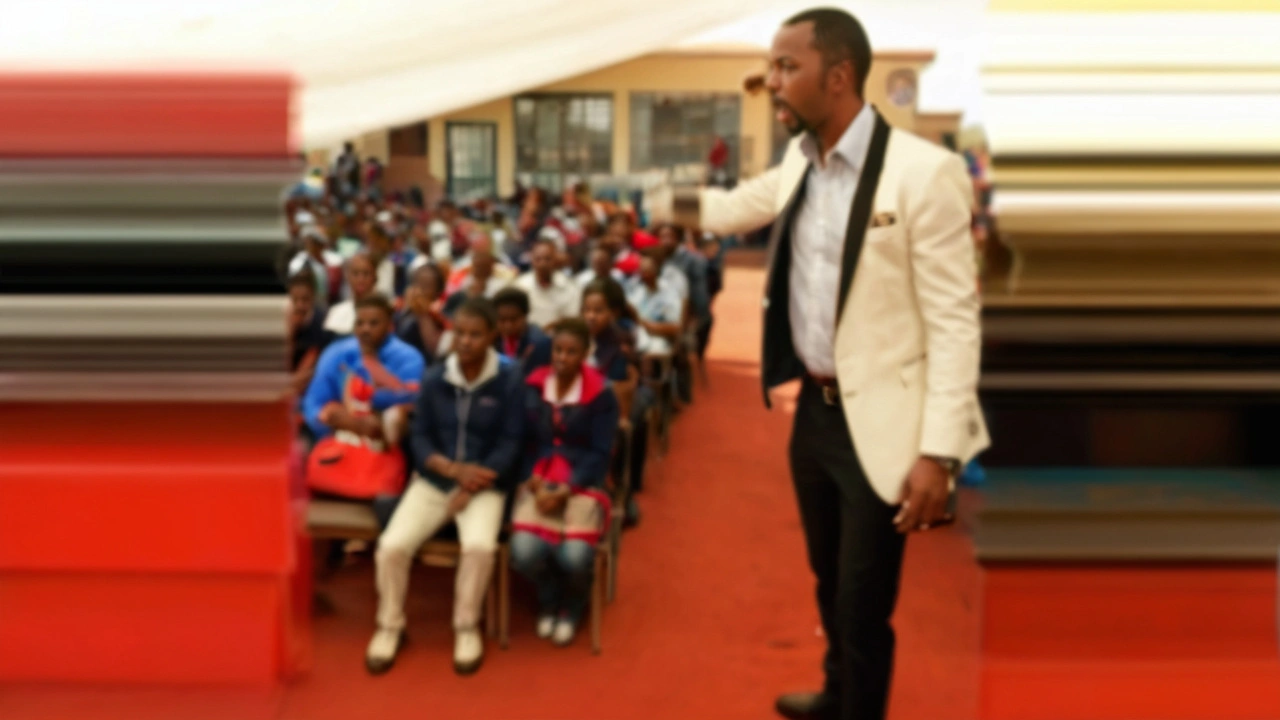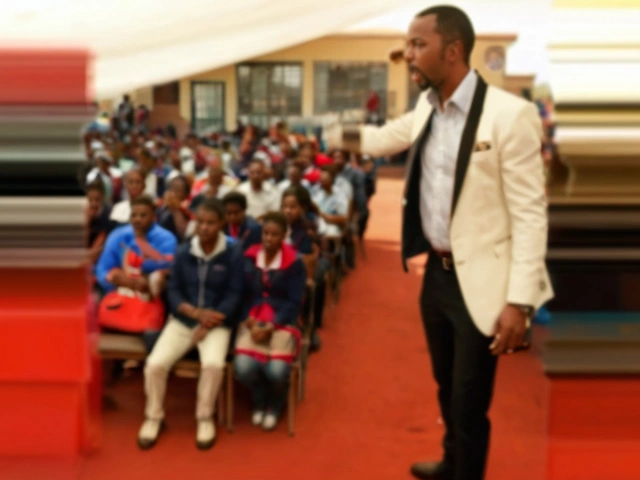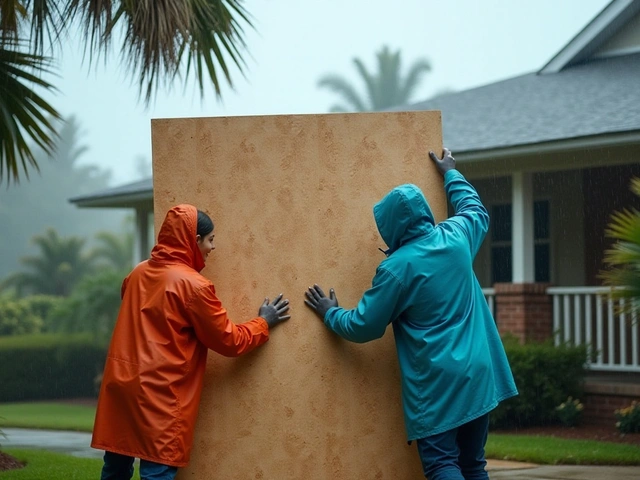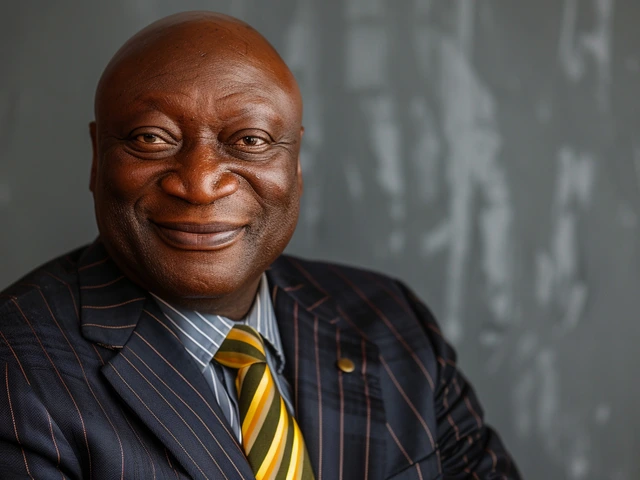
Self-Proclaimed Prophet Mboro Menaces Teachers at Gauteng School with Weapons
Famed self-proclaimed prophet Paseka Motsoeneng, better known as Mboro, has found himself at the heart of a dramatic and tense altercation at Matshidiso Primary School in Katlehong, Gauteng. On Monday afternoon, shortly after the school day came to an end, Mboro arrived at the school equipped with two pangas and accompanied by two other men, one of whom wielded an assault rifle. The unsettling event unfolded amidst an already fraught custody battle over two young pupils.
The root of the conflict lies in the recent tragic death of the children's mother, which subsequently led to a bitter custody dispute between the maternal and paternal sides of the family. The children's maternal grandmother, who is also employed at the school, had been taking care of the kids and refused to relinquish them to their father without proper consent. When the father came to the school with the intent to pick up his children without the grandmother's permission, tensions quickly escalated.
The Violent Confrontation
The deputy principal and other school staff stood firm on their decision not to release the children, which prompted Mboro and his men to intervene. Armed with pangas and an assault rifle, Mboro threatened the teachers in a bid to force them to hand over the children. The school erupted in chaos, drawing the attention of the local community who rushed to the scene to witness and intervene in the unfolding drama. Realizing the gravity of the situation, the school's principal and governing body swiftly reported the matter to the police.
Police and Community Response
The authorities responded promptly, and the police's child protection unit has been assigned to mediate and resolve the contentious custody issue. Additionally, psychosocial support has been assured for the teachers and learners who will no doubt have been traumatized by the shocking events.
MEC’s Stance on School Safety
The incident has not gone unnoticed by provincial authorities. Matome Chiloane, the Gauteng Education, Sport, Arts, Culture & Recreation MEC, strongly condemned the violent outburst. Highlighting the primary concern for the safety and well-being of both students and educators, Chiloane emphasized the critical need for schools to remain safe havens, free from such external conflicts and threats.
Implications for School Security
This disturbing episode brings into sharp focus the broader issues of safety and security within South African schools. It raises challenging questions about the measures currently in place to ensure the protection of students and educators. While it is distressing that such an event occurred, it also serves as a wake-up call for enhanced security protocols in educational institutions.
Community involvement played a crucial role in de-escalating the situation. However, it underscored the necessity for trained security personnel in schools and a more robust system for managing access to school premises, significantly when custody disputes or other potentially volatile issues are at play. Enhanced collaboration between schools and local law enforcement, particularly the child protection units, could prevent future incidents of this nature.
The Way Forward
In the aftermath, the emphasis must be on healing and rebuilding. Psycho-social support services are essential to addressing the trauma experienced by both the children and the school’s staff. Moreover, this incident presents an opportune moment for the education department to re-evaluate and strengthen its policies concerning school safety and child protection protocols.
A Lesson for All
Ultimately, this incident serves as a stark reminder of the vulnerability of children and educators alike. It highlights the inherent duty of all stakeholders in the education system – from government officials to community members – to ensure that schools remain safe and nurturing environments where learning can flourish without fear or interruption.
As the community rallies together to support those affected, it is hoped that such traumatic events will spur meaningful change, fostering environments where education thrives and every child’s right to safety is uncompromised.

Community’s Role in Ensuring Safety
The response from the local community was pivotal in mitigating the immediate danger posed by Mboro and his companions. It reflects the vital role communities play in safeguarding the well-being of their children and schools. Acts of bravery and solidarity were exhibited by both the teachers and local residents, which prevented the situation from escalating further.
However, community reactions also highlight the necessity for ongoing education on how to deal with crises. Community members must be equipped with the knowledge and resources to respond effectively without jeopardizing their safety.
Legislation and Enforcement
The judicial system must also scrutinize such incidents to ensure justice prevails. Proper legal actions against those who threaten the sanctity of educational environments should serve as a deterrent to similar future actions. Stronger enforcement of existing laws regarding weapon possession and violence in and around school premises can significantly contribute to overall safety.
The cooperation between the school’s governing body, local authorities, and the community in this case sets an example of what can be achieved through unity. Moving forward, this cooperative framework should be strengthened and replicated across other regions to bolster school safety comprehensively.
In Conclusion
The Matshidiso Primary School incident encapsulates numerous critical issues that need addressing in today's educational landscape. From security and child protection to community involvement and legal framework, this episode shines a light on areas demanding immediate and sustained attention.
For the families involved, it is a poignant reminder of the complexities surrounding child custody and the profound impact such disputes can have on broader community dynamics. With appropriate measures, this tragedy can catalyze positive changes, ensuring schools remain secure sanctuaries for future generations.






The confrontation at Matshidiso Primary underscores the critical need for robust security protocols within South African schools. When an individual arrives armed with pangas and an assault rifle, it jeopardizes not only staff safety but also the psychological wellbeing of pupils. Effective intervention frameworks should prioritize de‑escalation and immediate involvement of child protection units. Moreover, clear custodial guidelines can mitigate the escalation of familial disputes into violent incidents. Schools must collaborate with law enforcement to establish perimeter controls and rapid response mechanisms. Ultimately, safeguarding educational environments requires coordinated policy and community vigilance.
Wow what a wild scene 🙌
Indeed, the incident demonstrates how lapses in custodial enforcement can cascade into security breaches. The term 'protective custody' often becomes a contentious point when families dispute guardianship. In this case, the lack of a clear legal directive amplified tensions, leading to the armed standoff. Strengthening inter‑agency communication between social services and educational institutions would likely preempt similar outcomes. Your analysis of intervention protocols aligns with best‑practice recommendations in child welfare literature.
That reaction captures the shock, yet it also raises the question of how community members can be better prepared for such emergencies. Training programs that teach non‑violent de‑escalation could empower locals to intervene safely. Additionally, establishing clear reporting channels helps prevent unauthorized armed presence on school grounds. It's crucial we balance swift action with respect for legal processes. These steps could transform raw fear into constructive preparedness.
From a cultural perspective, this tragedy highlights how community solidarity can both defuse and be strained by conflict. In many South African neighborhoods, extended families often serve as informal caregivers, yet legal frameworks lag behind these social realities. When schools become the battleground for custody disputes, the entire community feels the ripple effects. Strengthening culturally sensitive mediation services could bridge the gap between traditional practices and formal legal requirements. Ultimately, fostering inclusive dialogue ensures that children’s rights remain at the forefront.
The saga of Mboro confronting educators with weaponry is nothing short of a theatrical tragedy that underscores a profound moral decay.
It is a stark illustration of how personal vendettas can corrupt the sanctity of academic institutions.
When an individual takes it upon himself to become a self‑styled prophet and decides to enforce his will through firearms, he betrays the very principles of civil society.
Such actions cannot be dismissed as mere misunderstandings; they are deliberate provocations that endanger innocent lives.
The deputy principal and staff displayed commendable resolve by refusing to capitulate to intimidation, thereby upholding the rule of law.
Their courage serves as a beacon for educators nationwide who may face similar threats.
Nevertheless, the incident reveals glaring deficiencies in school security infrastructure, which must be addressed with urgency.
Installing controlled entry points, employing trained security personnel, and maintaining a visible law‑enforcement presence are non‑negotiable measures.
Moreover, the involvement of the child protection unit showcases a proactive governmental response that should be expanded across all provinces.
Psychosocial support for both teachers and students is essential to mitigate the trauma inflicted by such volatile encounters.
Community members who intervened played a pivotal role, yet their bravery should not excuse the need for professional security protocols.
The legal system must also send a clear message that brandishing weapons in educational settings will attract the severest penalties.
Any leniency would only embolden other would‑be agitators to follow suit.
We must demand that policymakers allocate sufficient resources to reinforce school safety, including regular risk assessments and emergency drills.
Only through a concerted effort of educators, law enforcement, parents, and the state can we restore the safe haven that schools are meant to be.
In the end, the moral imperative is clear: protect our children and those who teach them, lest we descend into a culture of fear and violence.
The response was inadequate.
While I applaud the call for stricter security, it is essential to recognize that such measures must respect constitutional rights and avoid militarizing our schools. Over‑reacting will only inflame tensions. A balanced approach, anchored in law and community partnership, is the way forward.
Indeed, integrating community liaison officers into school safety plans can provide that balanced approach you mention. These officers serve as bridges between law enforcement and educators, ensuring that security protocols are applied with cultural sensitivity. By fostering trust, schools can reduce the likelihood of armed interventions and promote a cooperative environment for conflict resolution.
Frankly, this whole mess is a reflection of broader societal breakdowns that our nation can't afford. We need decisive action now.
Honestly, I think the guy totally misread the whole legal framework. The school admin should have defintely called the poilice earlier. It's just common sense, you know?
The incident shows how weak our system is. If schools can't stop a prophet with guns, what hope do we have?
The community’s swift action during the crisis is commendable and illustrates the power of collective resolve.
When neighbours band together, they can create a protective buffer that deters further aggression.
However, relying solely on ad‑hoc interventions is not a sustainable strategy.
Schools must institutionalise safety measures that empower staff without placing the burden on civilians.
Training programmes that teach de‑escalation tactics can equip teachers with the confidence to manage volatile situations.
In addition, regular drills reinforce preparedness and minimise panic when real threats arise.
Collaboration with local law‑enforcement agencies ensures that professional response is available at a moment's notice.
Funding for security infrastructure should be allocated transparently to avoid disparities between schools.
By fostering a culture of vigilance and support, we protect not only the children but also the educators who nurture them.
Let this incident be a catalyst for lasting change that secures every learning environment.
The points raised regarding systematic safety enhancements are well‑taken. Could you elaborate on the specific metrics schools should adopt to assess the efficacy of these interventions? A data‑driven framework would bolster accountability and ensure continuous improvement.